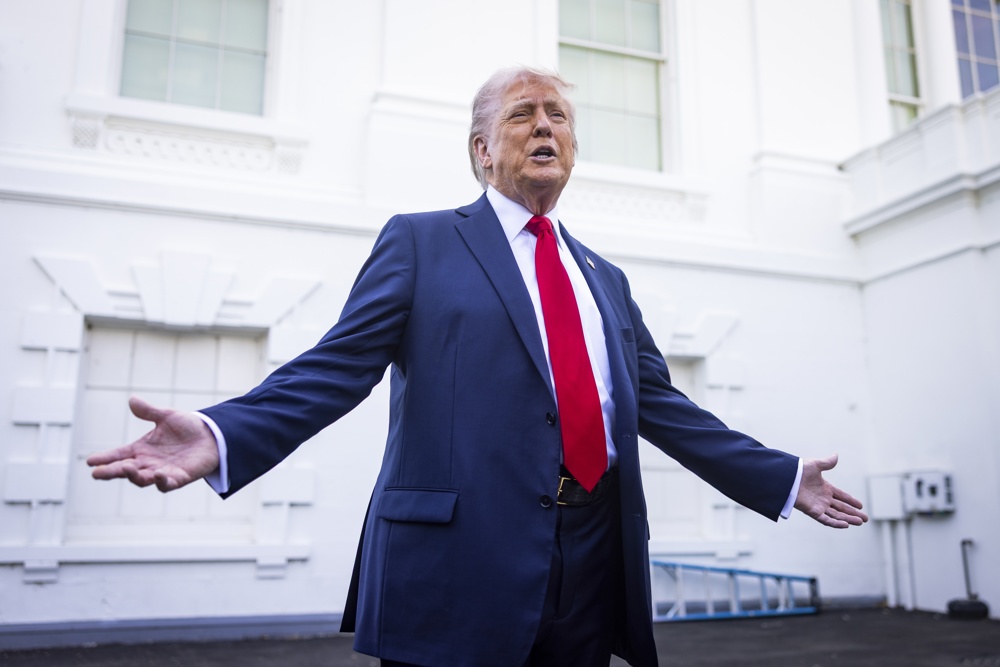- May 17, 2025
Trump travels to Middle East with patchy diplomatic agenda focused on business

By Jairo Mejía
Riyadh, (EFE).— US President Donald Trump will once again break with tradition by starting his first international tour of the Middle East on Tuesday, with stops in Saudi Arabia, Qatar, and the United Arab Emirates.
The trip will center on investments and trade deals, but may yield little progress on the region’s most pressing geopolitical issues.
During the four-day visit, which begins in Riyadh, Trump is set to inaugurate a US-Saudi investment forum before attending a state dinner hosted by the Saudi royal family, where he will share a table with Crown Prince Mohammed bin Salman, the de facto ruler of the oil-rich kingdom.
His visit comes at a critical moment for the region, amid US efforts to revive nuclear dialogue with Iran, secure maritime trade routes through the Red Sea, and lay groundwork for resolving the Israeli-Palestinian conflict and the Syrian crisis following the fall of the Assad dynasty.
Business First
Trump’s focus on promoting Gulf investments is drawing scrutiny back home, especially since the visit comes just weeks after his sons, Eric and Donald Jr., traveled to the region to promote real estate and cryptocurrency projects on behalf of the Trump Organization.
White House spokeswoman Karoline Leavitt dismissed suggestions of a conflict of interest as “ridiculous,” reiterating that Trump’s official role is kept separate from family business dealings.
Still, concerns persist. According to US government sources, Trump may accept the gift of a super-luxury Boeing 747-8 from Qatar for use as Air Force One, and later for his presidential foundation, further fueling suspicion.
Trump Organization projects worth over $1 billion in Jeddah and Dubai, undertaken with Saudi company Dar Global, also complicate efforts to untangle his private interests from his diplomatic agenda.
Diplomacy on a Tightrope
The visit follows a fragile ceasefire in Yemen, where Iran-backed Houthi rebels have agreed to pause attacks on US interests in the Red Sea. Washington remains on alert to intercept missiles and secure the strategic trade route.
Trump, who also prioritized the Middle East on his first overseas trip in 2017, has ramped up diplomatic efforts in the region. His stated goal remains to ensure Iran “never obtains a nuclear weapon.”
Over the weekend, Trump’s special envoy to the Middle East, Steve Witkoff, met Iranian Foreign Minister Abbas Araqchi in Oman to revive nuclear talks.
It remains unclear whether the US will allow Iran to retain limited uranium enrichment capabilities.
In a move that could stir further tension, US Energy Secretary Chris Wright did not rule out a civil nuclear cooperation framework with Saudi Arabia, an agreement that may not hinge on normalization with Israel.
That normalization remains stalled, with Riyadh linking it to US recognition of a Palestinian state, something Israeli Prime Minister Benjamin Netanyahu opposes.
As if the regional dynamics weren’t complex enough, Riyadh has also emerged as a key mediator in the Ukraine-Russia war.
At one point, a summit between Trump and Russian President Vladimir Putin seemed possible during this trip, but the White House has now ruled that out, another missed opportunity in Trump’s ambitious but troubled foreign policy agenda.

